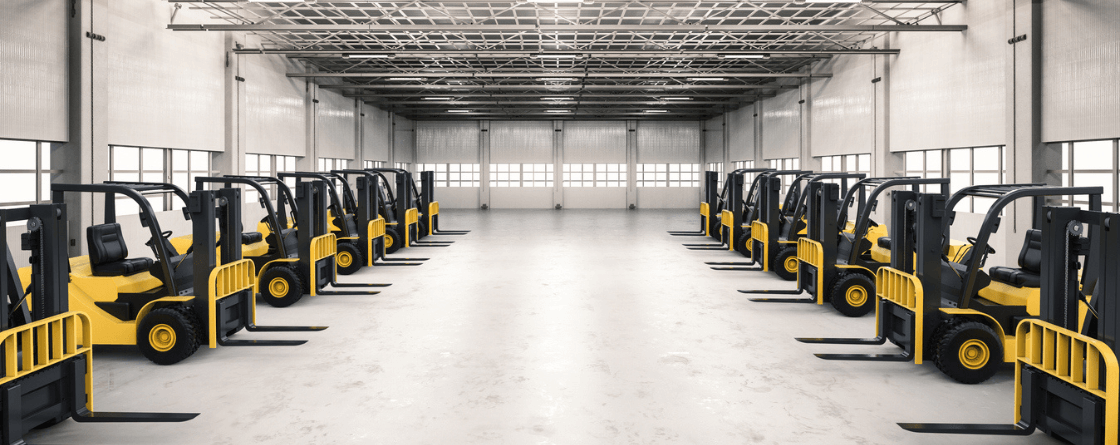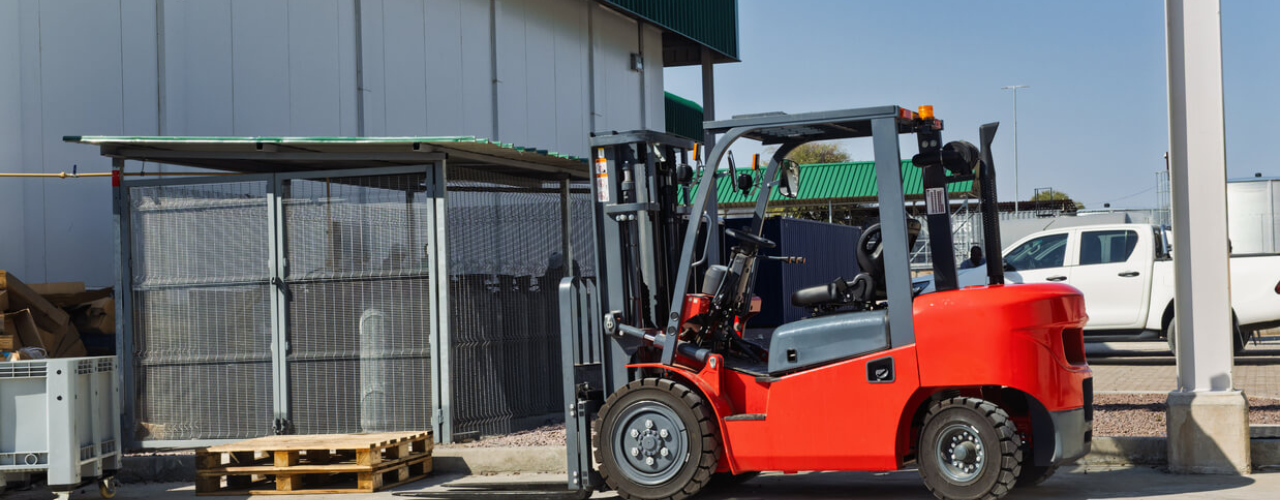
Blog
Seasonal Forklift Demand: How to Prepare Your Fleet for Peak Periods

If you run a fleet, you know the drill: the relentless, often overwhelming surge of seasonal demand. The frantic pace of retail holidays, the intense push of construction season, or the make-or-break timing of agricultural harvests. These peak periods test your material handling capabilities and expose every weakness.
Unpreparedness inevitably translates into crippling bottlenecks, costly breakdowns that halt operations cold, avoidable safety incidents, and ultimately, a direct hit to your bottom line. Proactive fleet preparation isn’t merely beneficial; it’s the absolute non-negotiable for maintaining seamless operations.
At Glosrose, our nearly five decades in this business mean we’ve observed these seasonal cycles and actively helped countless businesses navigate and master them. We are your seasoned partner, dedicated to ensuring your fleet stands ready to perform, precisely when the pressure is highest.
Take the Bobcat fork lift, for instance, a prime example of the robust, versatile equipment that consistently performs under the varied, intense demands of these periods.
Pinpointing Your Peak Periods: Data-Driven Preparation
Mastering seasonal demand starts with precise, data-driven planning.
How do I identify my business’s peak periods?
You need to truly understand your specific seasonal cycles. This goes beyond mere guesswork. Dig into your historical data: past sales figures, shipment volumes, and project timelines. This information paints a clear picture of when your demand spikes. Accurate forecasting of future demand spikes becomes your strategic lifeline, preventing those frantic, last-minute scrambles that derail an entire season and ensuring you have the right resources on the ground before the rush.
Assessing Your Current Fleet: Identifying Strengths and Gaps
Once you’ve grasped your demand patterns, it’s time for a brutally honest evaluation of your existing equipment.
How do I assess my current forklift fleet for seasonal readiness?
Conduct a thorough, no-holds-barred audit of your current fleet. Scrutinize each machine’s age, its current condition, and its true capacity. Pinpoint any potential weak points. An aging forklift, for instance, often buckles under sustained peak pressure, and that’s a risk you cannot afford. Identify any crucial gaps in your fleet’s capabilities. Do you need additional reach trucks for increased vertical storage during a busy period? Or perhaps more robust counterbalance units for heavier outdoor loads? Regular, comprehensive fleet audits are an absolute necessity before any surge hits.
Strategic Pillars for Peak Period Readiness
Proactive measures form the bedrock of successful seasonal operations.
What proactive steps prepare my forklift fleet for peak demand?
- Proactive Maintenance & Servicing: Preventative maintenance before peak periods is non-negotiable; it acts as your insurance policy against crippling downtime. Conduct thorough, meticulous checks on batteries, tires, fluids, hydraulics, and all important components. Crucially, ensure every machine meets its LOLER/PUWER compliance standards before high usage begins. As experts, we know an unexpected compliance issue during your busiest week risks catastrophic operational failure you simply cannot afford. Glosrose delivers comprehensive servicing, ensuring peak performance and minimizing unexpected downtime.
- Flexible Fleet Expansion: The Power of Hire: Short-term forklift hire provides unmatched agility and cost-effectiveness, allowing you to scale precisely without tying up capital. Glosrose offers extensive fleet availability, guaranteeing rapid access to the exact equipment you need. We precisely match specific Bobcat forklift models or other specialised equipment to your peak requirements be it electric units for extended indoor shifts or robust rough terrain models for outdoor operations, ensuring you’re never caught short.
- Operator Readiness & Safety: You must ensure enough trained, certified operators are on hand. Refresher training for your existing team and thorough onboarding for any temporary personnel prove vital. Reinforce safety protocols and best practices relentlessly, particularly during those high-pressure, fast-paced operations. We’ve seen firsthand how human error escalates when operators are fatigued or unfamiliar with their equipment under duress.
- Parts & Spares Management: Readily available common spares are essential; they serve as your lifeline. A minor component failure must not bring your entire operation to a grinding halt when every minute counts. Glosrose supports your needs with a reliable parts supply and rapid delivery, including 24-hour service for those urgent, middle-of-the-night requirements.
Optimising Warehouse Flow for Peak Efficiency
Beyond the equipment itself, your operational layout plays a pivotal role.
How can I optimise my warehouse flow for seasonal peaks?
First, review your warehouse layout and operational flow. Strategise for maximising temporary storage space. Implement efficient picking and loading strategies to actively reduce bottlenecks. Even subtle adjustments to traffic patterns can yield significant gains during high-volume periods.
The Bobcat Forklift Advantage in Peak Periods
A Bobcat forklift brings distinct advantages during intense seasonal demand.
Why is a Bobcat forklift ideal for peak periods?
Bobcat forklift models distinguish themselves through durability and robust construction. They offer inherent versatility across various tasks and environments, readily adapting to changing demands. Operator comfort features actively reduce fatigue during long shifts, a vital factor for sustained high-volume work. Their extensive range of power options (electric, diesel, LPG) perfectly suits diverse peak operational needs. These machines consistently prove their mettle when pushed to their limits.
Glosrose: Your Strategic Partner for Mastering Seasonal Demand
Glosrose provides equipment and offers a strategic partnership built on proactive planning and comprehensive support. We deliver tailored solutions from robust maintenance contracts designed for relentless use to flexible hire options that adapt to your precise demand swings ensuring your fleet’s absolute readiness. Our insights are forged from decades on the ground, helping businesses like yours weather the storm and truly dominate their busiest periods.
Conquer Your Peak Season with Glosrose Forklifts
Don’t let seasonal surges overwhelm your operations. Partner with Glosrose to transform your peak periods from a challenge into a strategic advantage. Secure the ideal forklift a Bobcat fork lift or another powerful model – one that delivers precision, power, and practical safety to your warehouse.
Contact us today for expert advice and a tailored quote. Glosrose’s commitment extends to ensuring your fleet is not just ready but optimised to meet the relentless demands of your busiest times, providing the reliable, high-performance equipment your business demands, exactly when it counts. Explore our full range of forklift types to find the perfect match for your operation.
FAQs: Common Questions on Preparing for Seasonal Forklift Demand
How far in advance should I plan for seasonal forklift needs?
Begin planning at least 2-3 months in advance of your anticipated peak. This allows ample time for fleet assessment, maintenance scheduling, and securing additional hire equipment.
What are the primary benefits of hiring forklifts for peak periods?
Hiring provides flexibility, avoids large capital outlays, includes maintenance, and allows you to scale your fleet precisely to temporary demand without long-term commitment.
How does Glosrose ensure quick delivery of hire equipment during busy times?
Glosrose maintains a wide, ready-to-go fleet and leverages efficient logistics, often offering same-day or next-day delivery to meet urgent requirements.
What are the most essential maintenance checks before a peak season?
Focus on battery health, tire condition, fluid levels, hydraulic system integrity, and brake functionality. Ensure all safety features operate correctly and compliance checks are current.
Are Bobcat fork lift models particularly suited for intense seasonal work?
Yes, Bobcat fork lift models are exceptionally well-suited. Their robust construction, inherent reliability, and diverse power options mean they capably handle the extended operating hours and varied tasks common during peak periods.
You May Also Like


Can the skid-steer loader take on more of the work traditionally done by compact excavators?

How UK Compliance and New Tech are Reshaping Counterbalance Forklift Training and Safety
Get in Touch
Not sure what you are looking for or need some advice for your requirements? Get in touch with us today and a member of our experienced team will be more than happy to help answer your questions.
